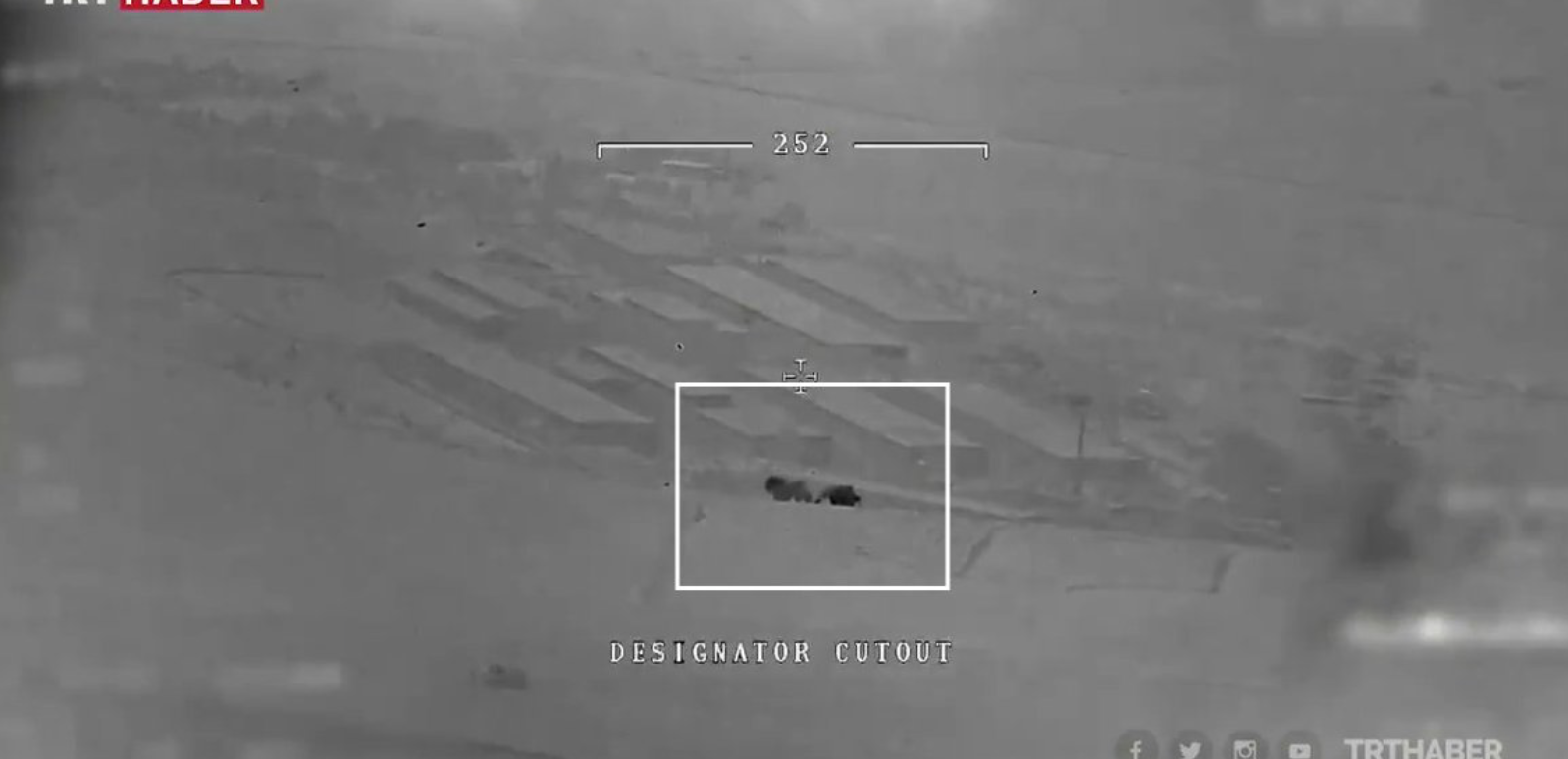Date of Report: March 17, 2020
Confirmed that Turkey has destroyed an Assad regime chemical weapons facility 13km south of Aleppo.
Kareem Shaheen
Introduction
On February 28, during a Turkish aerial onslaught of Syrian forces in the north of the country, Turkey claimed to have struck “a chemical warfare facility” in Aleppo belonging to the Syrian government. Unverified news spread throughout social media like wildfire along with Turkish drone footage purporting to show the attack in question. In, what seemed to be, coordinated fashion the whole thing played out quite convincingly.
In this report I take a look at the claims from Turkey and her supporters and see if, according to the evidence, they are telling the truth.
**Where appropriate I have added larger image files of those provided below. Please just click on the images to open them in a new tab.**
The Target
The alleged target was the al-Safira military complex on the outskirts of the town with the same name. The town had been recaptured by Syrian forces on November 1, 2013 after a concerted campaign to secure the nearby chemical facility that the OPCW-DAT (Declarations and Assessment) team needed access to as part of Syria’s accession to the CWC (Chemical Weapons Convention).
The @fab_hinz Twitter account references the opposition media channel, “Zaman al-Wasl”, as locating the former Syrian chemical compound to the location on this map denoted as, “Alleged al-Safira Destroyed”. Note its proximity to the location struck by the Turks.
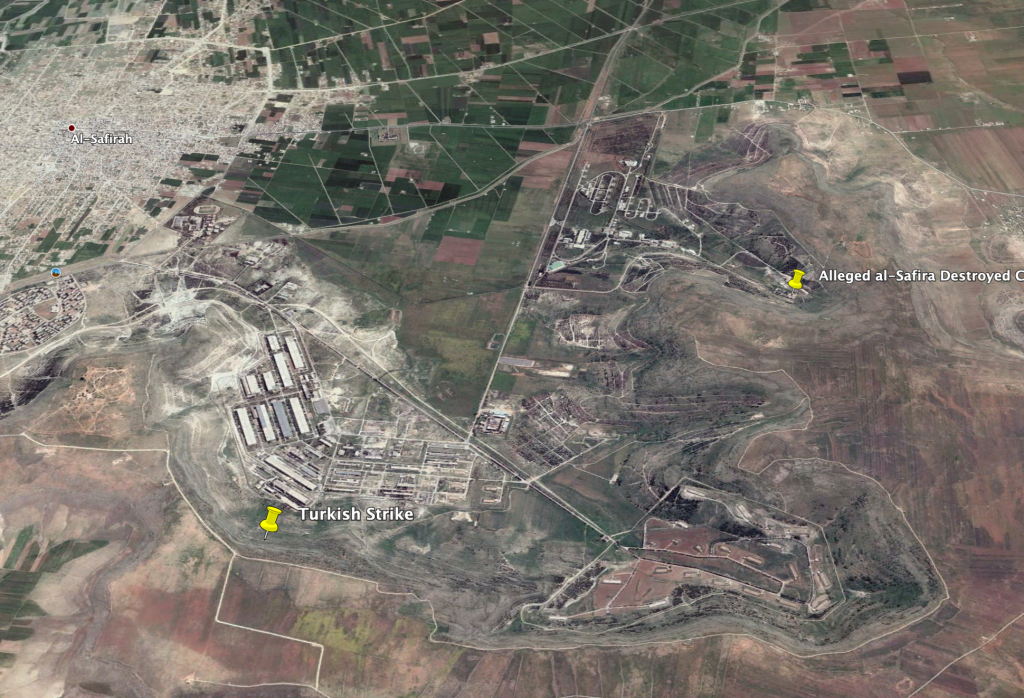
Below is a close-up of the alleged chemical plant before and after destruction as per OPCW-DAT requirements.
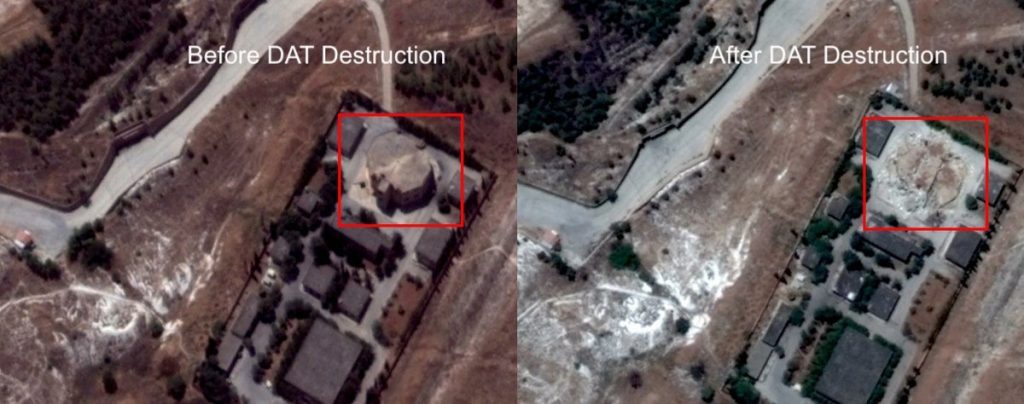
Attack on a Chemical Facility?
Here is the drone footage presented by the Turkish military showing the moment, they claim, the chemical facility was hit.
Here is a still image from that video showing the point of impact:
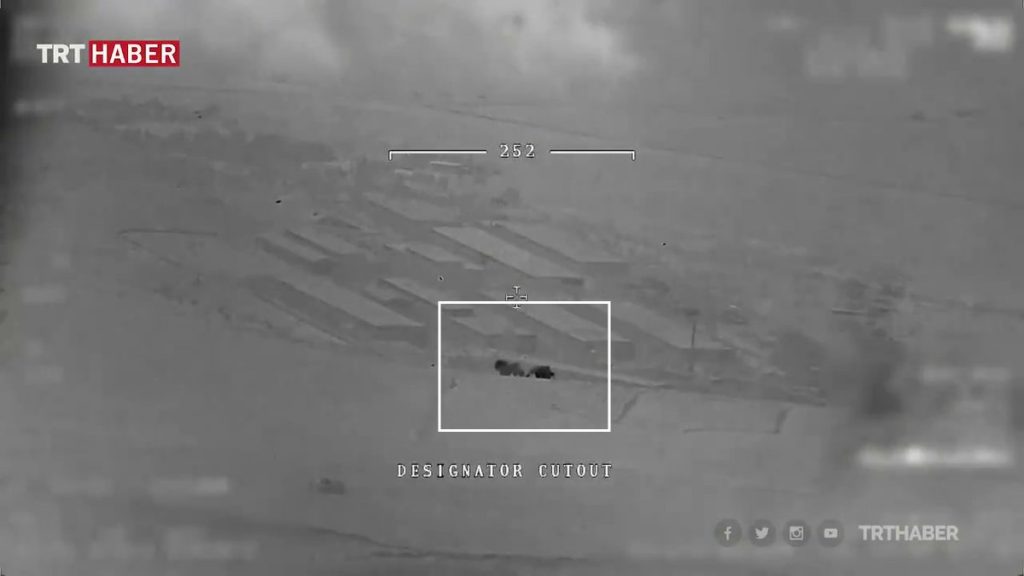
Next up I’ve taken a screenshot of the Turkish drone footage and placed it side-by-side with imagery from Google Earth and marked out the various reference points for your information.
If at first you’re bit confused at the angle of the drone footage please bear in mind it’s quite high in the sky and its viewpoint is different than what can be obtained for this purpose from Google Earth. (Click image to enlarge)

Samir (@obretix) located the impact to yellow pin in the image below:
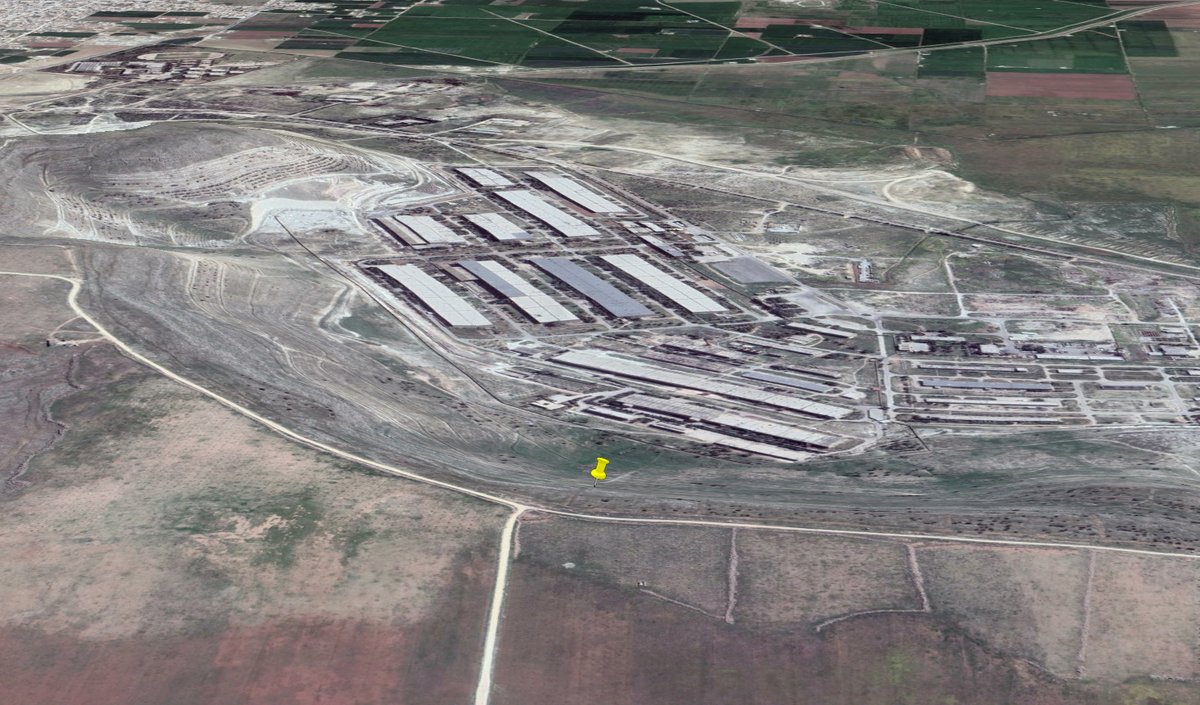
He then compares satellite imagery of the spot from Feb 25, 2020 (before the attack) to imagery on March 4, 2010 (after the attack) and notes the point of impact (red circle):

The first thing that should jump out at you is the point of impact is a field and not a building.
In the next image I take a birds-eye view over the military complex to show the impact point more clearly. I also add the previous image showing the drone angle for completeness.
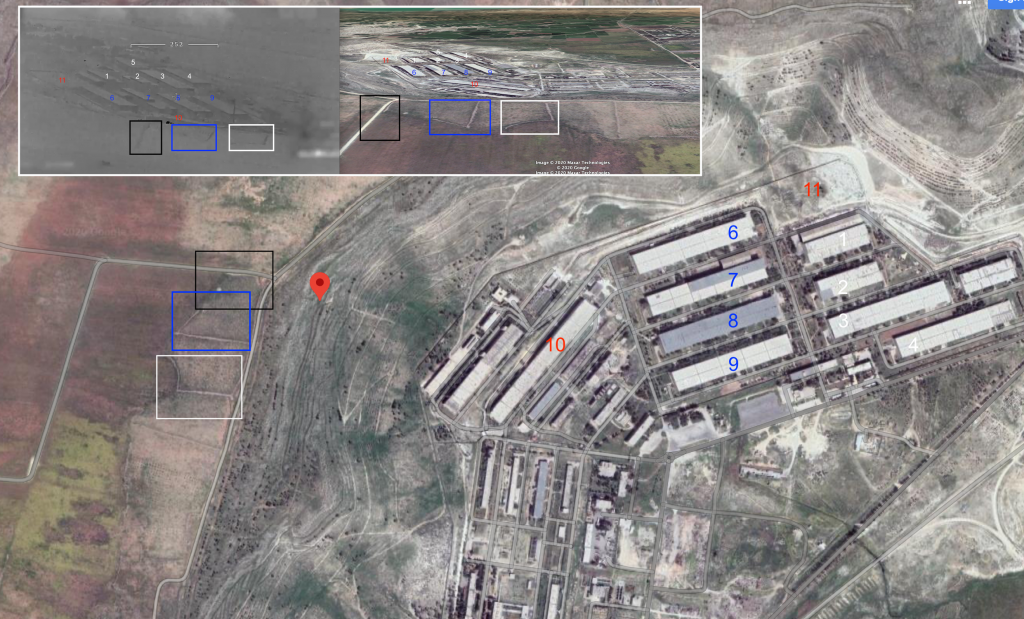
Therefore the Turkish strike on a “a chemical warfare facility” never happened. Yet amidst all the fanfare and media attention few seemed to be interested in trying to verify the claim.
What appears to have happened is that the Turks were aiming to hit the military complex and missed and opted to ‘big-up’ their attack as a strike on a chemical plant. Of course had there still be any concern of a chemical plant in Syria the DAT would be all over the Syrian government with the US calling for immediate strikes.
The Narrative Management Committee
Up first is Kareem Shaheen who came to attention when he claimed to have been the first and only journalist to be able to visit Jihadist controlled Khan Sheikhoun immediately after the attack in April 2017. Yet he provides no footage or images of him being there apart from a narrated video which, I’m told, he received in Turkey. I invited Kareem, during an exchange some time back, to show the footage he claims he has of being in the town. He fell silent, never to respond to me again. Likewise he’s done the same to many others. Ask him for proof he was there, he mutes you.
Kareem is one of the first to report on the Turkish claim:
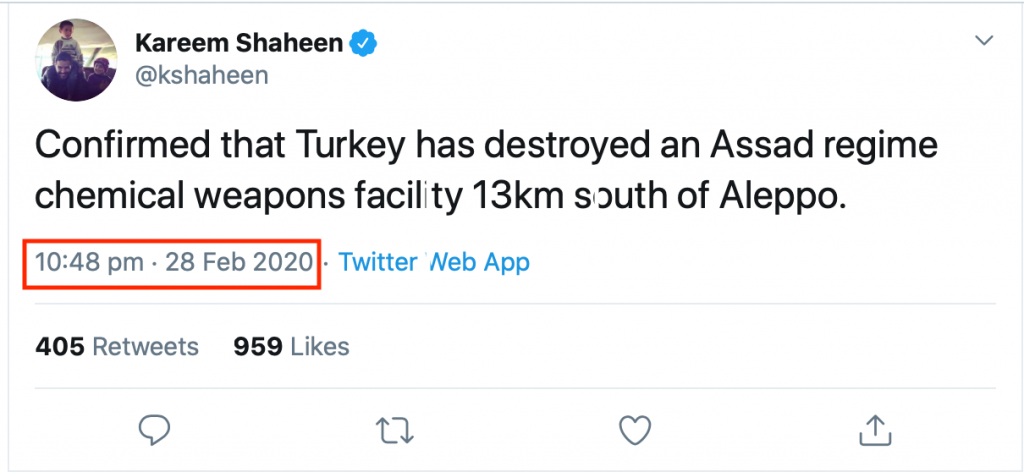
I draw your attention to a tactic that’s employed by the more profound propagandist in the Syrian affair. The astute amongst you will note this happening quite regularly. Firstly, a claim is tweeted as fact, in this case, “Confirmed” at 10:48pm. It receives 959 “Likes” and 405 RTs. So the word is ‘out there’ and is picked up and repeated through the echo-chamber.
Just over an hour later it’s repeated by Idrees Ahmed. Those of you that are aware of Idrees will know him as an aggressive and vehemently anti-Syrian, pro-interventionist. Idrees is an academic of the worst kind. Someone who hides behind the respect his profession affords to launch attacks on *anyone* that does not share his pro-Jihadist world-view. Here is an example of the complete lack of due-diligence employed by this propagandist. Yet his willingness to simply repeat information of his bias, without verification, is indicative of not just his entire input in the Syrian affair but that of his echo-chamber colleagues. A claim is made by one and simply repeated ad-nauseam. Present them with evidence they are wrong and they block instantly labelling you a “war-crimes denier”, or the likes.
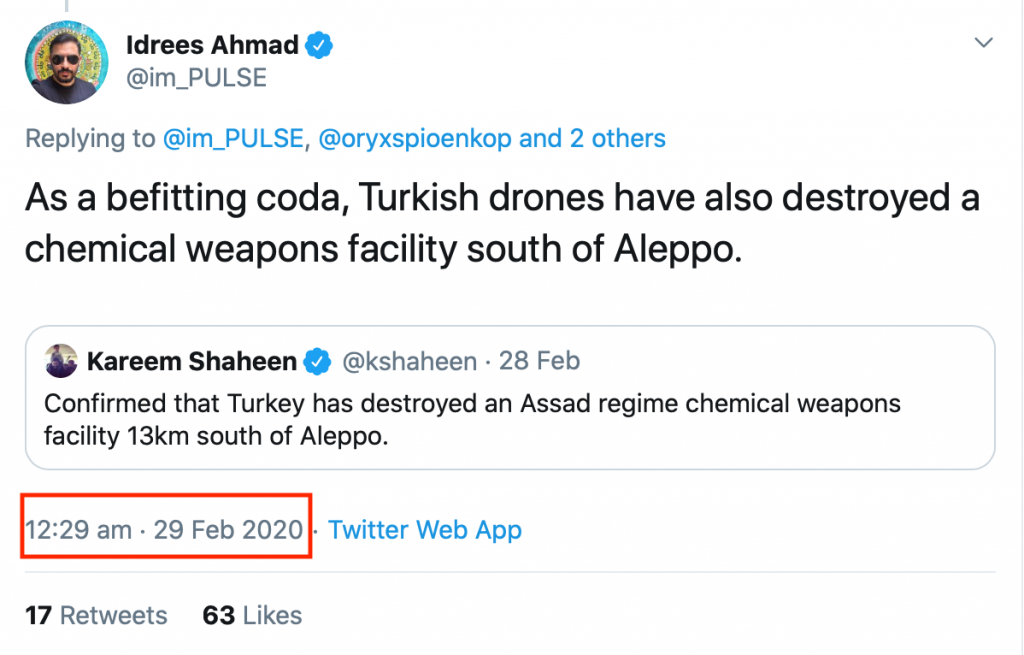
After Kareem tweeting a falsehood, that received the traction he desired, he then wound his claim back from being “Confirmed” at 10:48 pm on the 28th February to becoming “alleged” 11 minutes later at 10:59 pm. This tweet only garnered 58 “Likes” and 26 RTs.

From what I could gather Kareem’s tweet had the largest projection on Twitter for this specific claim from Turkey, a country that Kareem was previously based in. Whilst he gathered 959 “Likes” and 405 RTs, I found it interesting that his peers, who latched on his claim, found their efforts falling on deaf ears.
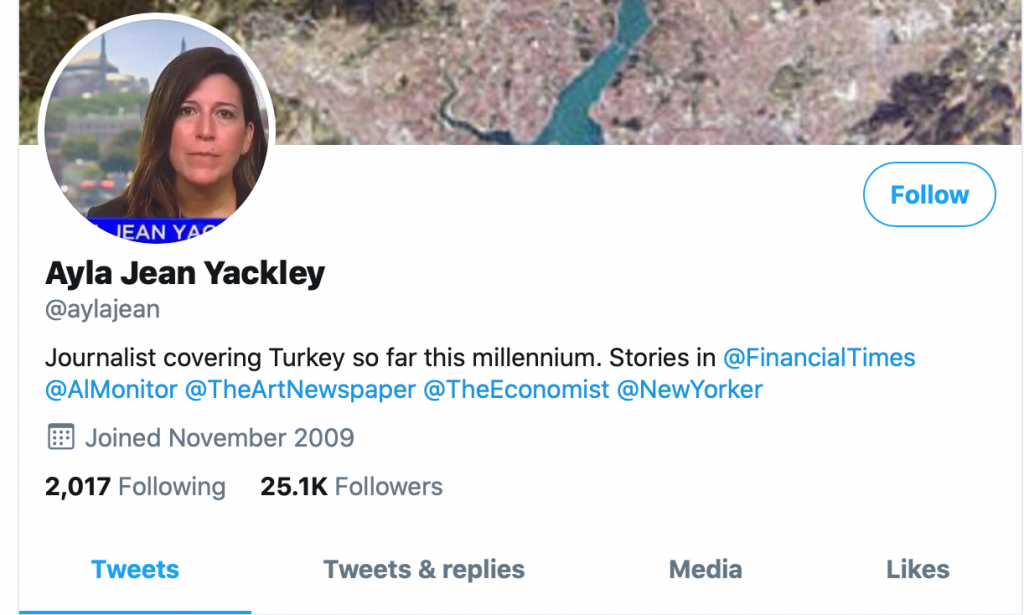
Ayla Jean Yackley @aylajean whom I have never heard of until now, has 25k “followers” and received a mere 17 “Likes” for her tweet:
Another person with 12.7k “Followers” manages 1 “Like”:
A look at the data on this points to a distrust of the mainstream narrative on Syria and claims of chemical attacks, or at the very least, a disinterest from the general public. It also highlights those that carry influence and those that do not.
Conclusion
If you haven’t been aware of this tactic as yet, keep your eyes peeled from here on. When executed properly, as Kareem does in this example, it’s an effective tool used by the pro-war lobby. Higgins uses it quite often too. When authority makes a claim you piggyback on it immediately before quickly stepping back when it looks suspicious. Anyone pulls you up on it, you just point to the authority that made the claim and then to your quick retraction. All the while your initial tweet has already done the damage.
It’s worth also noting in passing that this wasn’t the first time the Turks claimed to have hit this facility. I came across a tweet from 2015 of them claiming to have done so back then too.
The Turks are renowned to over-exaggeration under Erdogan. I urged caution at the footage emanating from the Turkish military at the time, given it hadn’t been verified. They certainly hit Syrian assets but before the dust had settled Kareem was unleashed to propagate the chemical facility claim and this just ahead of the upcoming IIT report looks a bit suspicious.
In summation; Turkey’s claim was false. There was no chemical facility hit. Turkey fired a missile that missed any structure and instead hit soil.
Time and time again we hear claims of Syrian chemical facilities being hit either by the US, France, UK, Israel or Turkey and when evidence is presented to support these claims (very seldom) it always turns up to be nothing but propaganda.
